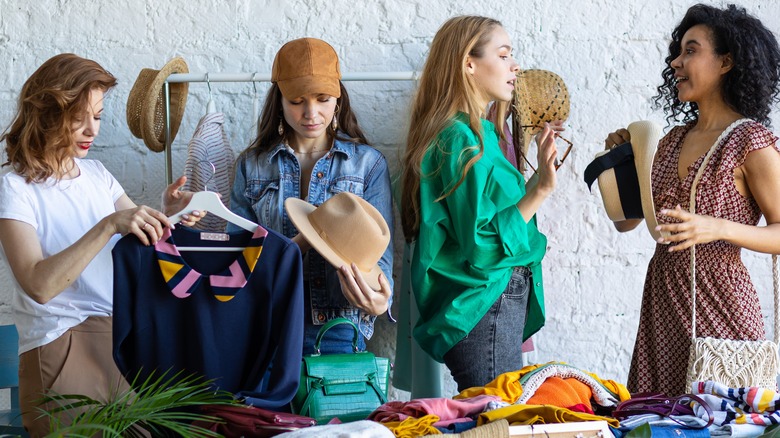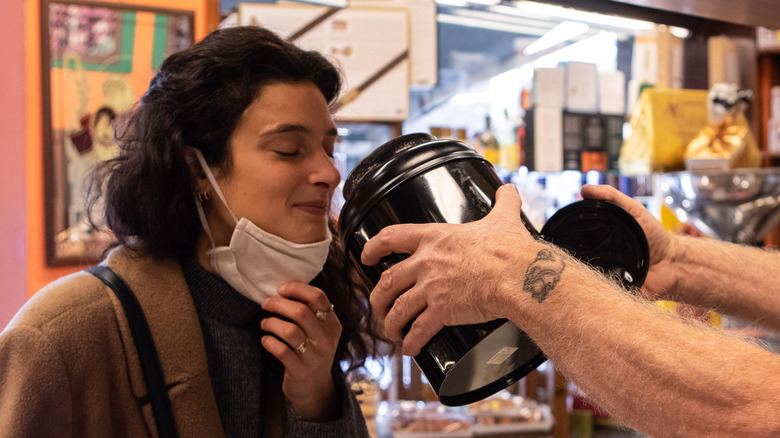How To Determine If Something You're Buying Is Truly Sustainable
Made from renewable resources, easily disposed of, and almost completely harmless to the environment, sustainable products are having a moment in the packaged goods and fashion industry, which are the major culprits of pollution. As environmental concerns are increasingly hogging the limelight these days, more people are embracing sustainable lifestyles through the consumption of eco-friendly products such as reusable shopping bags, recycled cutlery, and stainless steel drink bottles.
What's more, a 2022 survey by Deloitte shows that more consumers are being proactive in choosing brands that adopt practices that greatly reduce greenhouse gas emissions. According to First Insight's 2019 report, Gen Z and Gen X shoppers are showing more willingness to spend more money on sustainable products, while Baby Boomers were least impressed by the idea of going sustainable. If you're looking for ways to reduce your footprint and go green, shopping sustainably is the way to go. With that in mind, let's check out the tips on how to determine if what we're putting money into is truly sustainable.
Keep an eye out for sustainable certifications and specifics
The easiest and most surefire way to know if a brand is sustainable is to check its accreditation from a third-party, official regulatory body, The Sustainable Agency advises. For example, you can look for USDA Organic Seal for organic products, GOTS for organic textiles, Forest Stewardship Council for products made from trees, and ECOCERT for natural cosmetics. At the same time, look out for specific details that back up the company's transparency in sustainable production, says PopSugar.
Brands that are really sustainable have nothing to hide about the process used to create their products, how their supply chains function, and what ethical practices they embrace. In fact, they would take great pride in sharing their values and what they're doing to advocate them on their websites for the world to see. Companies that adopt sustainable practices usually publish sustainability reports on their websites, with these telling consumers who they're partnering with in their quest to go green, their annual carbon footprint calculations, their past accomplishments, and the goals they set moving forward.
Check the materials and do your own research
Another thing you should do is to check the specific materials that go into the product. For instance, organic cotton is one of the most eco-friendly materials for sustainable clothing, because it's produced with less water, pesticides, and fewer greenhouse gasses. As Life Cycle Analysis points out (via The Greenage), the method of producing a cotton T-shirt spares the use of 1,982 gallons of water. And by consuming products that require less water usage, you can indirectly help prevent soil degradation and improve the quality of the soil.
By going green, you save the blue (and the brown). Hemp, linen, wool, soy silk, bamboo fabrics, and recycled fibers, are also considered eco-friendly materials due to their non-negative impact on the environment. If you don't mind going the extra mile to know more about a so-called sustainable product, Good on You hosts a galore of reviews and ratings of various brands' environmental impacts. Ethical Consumers is also a place to reach out to for valuable information as well as verdicts on sustainable brands. If you can't seem to find sufficient information on the brand, email them or visit their physical store for some in-depth Q&A.
Becoming an environmentally conscious consumer requires patience and a little extra effort since it might take some time before you get used to all the sustainability lingos and standards for different commodities. It's okay to make mistakes here and there, but don't let that discourage you from patronizing sustainable brands and entrepreneurs who, like you, are working hard to conserve our earth's finite resources.


